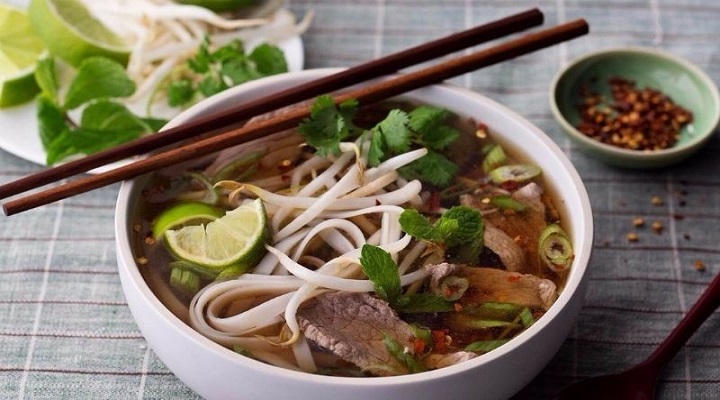Vietnamese cuisine is a treasure trove of flavors and cultural heritage, and at its heart lies a culinary delight that embodies both tradition and taste – Vietnamese soup. For those seeking to unravel the depths of Vietnamese gastronomy, the crossword of flavors found in these soups offers a perfect entry point. In this article, we embark on a journey through the world of Vietnamese soup, deciphering its unique characteristics, exploring popular variations, and delving into the cultural significance that each steaming bowl carries.
Contents
- 1 Vietnamese Soup: The Essence of Comfort and Tradition
- 2 Pho The Star of Vietnamese Soup Culture
- 3 Bun Rieu: A Seafood Symphony
- 4 Vietnamese Soup as Cultural Heritage
- 5 The Art of Crafting Vietnamese Soup
- 6 Regional Variations and Local Touches
- 7 Beyond Taste: Nutritional Aspects of Vietnamese Soup
- 8 Vietnamese Soup in Modern Times: A Culinary Ambassador
- 9 Conclusion
Vietnamese Soup: The Essence of Comfort and Tradition
Vietnamese soups, known as “phở” (pronounced “fuh”) or “bún riêu,” are more than just meals; they are an embodiment of Vietnam’s cultural tapestry and culinary heritage.
Pho The Star of Vietnamese Soup Culture
Pho Basics: Phở is a noodle soup consisting of flavorful broth, rice noodles, and various ingredients such as meats, herbs, and vegetables.
Broth Varieties: The foundation of phở is its broth, which can be beef-based (“phở bò”) or chicken-based (“phở gà”).
Texture and Taste: The combination of silky noodles, tender meat, and aromatic herbs creates a symphony of textures and tastes.
Bun Rieu: A Seafood Symphony
Bún riêu is another Vietnamese soup that celebrates the ocean’s bounty. This tomato-based soup is known for its vibrant colors and harmonious flavors.
Vietnamese Soup as Cultural Heritage
Culinary History: Vietnamese soups carry the echoes of centuries-old culinary traditions, blending indigenous ingredients with influences from China, France, and neighboring countries.
Family and Community: Sharing a bowl of soup is a communal experience in Vietnamese culture, fostering connections and warmth.
Rituals and Celebrations: Soups play a significant role in Vietnamese celebrations and rituals, symbolizing luck, fortune, and unity.
The Art of Crafting Vietnamese Soup
Broth Perfection: The process of creating a rich, flavorful broth involves slow simmering with various spices and aromatics.
Fresh Ingredients: Vietnamese soups are known for their use of fresh herbs, sprouts, and vegetables that add a burst of freshness to each spoonful.
Assembly: The meticulous assembly of ingredients, from noodles to proteins and garnishes, is a testament to the attention to detail in Vietnamese culinary culture.
Regional Variations and Local Touches
Vietnam’s diverse regions offer unique twists on traditional soups, influenced by local produce, climate, and culinary preferences.
Beyond Taste: Nutritional Aspects of Vietnamese Soup
Balanced Nutrition: Vietnamese soups often combine proteins, carbohydrates, and vitamins from various ingredients, creating balanced and wholesome meals.
Broth Benefits: The broths are known to be nutrient-rich, offering nourishment for the body and comfort for the soul.
Vietnamese Soup in Modern Times: A Culinary Ambassador
In today’s globalized world, Vietnamese soups have become ambassadors of Vietnamese cuisine, introducing people around the globe to the country’s unique flavors and culture.
Conclusion
Vietnamese soup is more than just a culinary creation; it’s a melody of flavors that encapsulates Vietnam’s rich history, traditions, and sense of community. With each spoonful, you’re not just savoring a dish; you’re experiencing a journey through time and culture. As you dive into the world of Vietnamese soup, you’re immersing yourself in the heartwarming essence of Vietnamese cuisine, one steamy bowl at a time.
